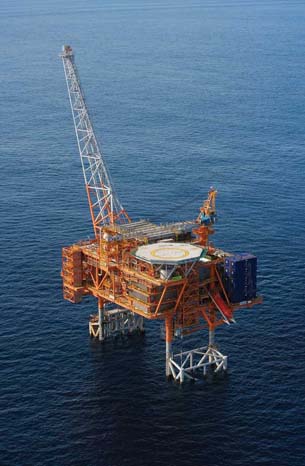February 24, 2010
By DE Editors
 |
AVEVA’s project lifecycle management software provided the Australian energy resource company with ISO15926-compliant information management to control, link, evaluate, and deliver all types of data and documents in a secure environment.
Prior to 2004, Woodside Energy Ltd., a leading Australian developer and producer of hydrocarbon products, was experiencing difficulty in managing and accessing the large amounts of data and drawings required for the development and maintenance of its facilities. Furthermore, much of Woodside’s plant information was maintained by third parties, leading to additional challenges in accessing and sharing engineering information.
To address this issue, Woodside accepted tenders from technology vendors to provide a solution to improve the management and delivery of its engineering data. Upon completion of the selection process, Woodside determined that AVEVA NET was the best fit for its needs.
The rationale for implementing AVEVA NET was to:
- Provide a single point of access to facilities, plant, and equipment data
- Make site and project information more widely available
- Improve the currency and accuracy of information
- Reduce the number of engineering applications in use at Woodside
- Reduce engineering costs by reducing the search time for information
- Ensure that engineering information meets the needs of the production division
The Scope of the Project
Woodside began the implementation of AVEVA NET in 2004, with the North Rankin A, GWA, and Karratha facilities coming online the following year. The remaining Australian-operated sites were added and completed in 2008.
To maximize the potential benefits and ensure that AVEVA NET would provide extensive and accurate information, significant data cleansing, validation, and conversion was undertaken during the implementation at existing sites.
The key elements of the initial implementation involved:
- Setup and configuration of the AVEVA NET Software
- Development of gateways to enable AVEVA NET to interact with existing business and engineering data warehouses
- Development of a data governance framework, data standards, and an engineering library, ensuring that the data are structured in the appropriate format and the nomenclature is consistent
- Collation, validation, and conversion of legacy data from facilities. This involved working closely with existing engineering procurement construction (EPC) and integrated service contractors to obtain the required data in the appropriate format.
Once AVEVA NET was implemented, a number of legacy systems were phased out. As legacy data from a wide variety of sources were progressively converted, cleansed, and validated, AVEVA NET gradually became the single source of engineering data within Woodside.
The Engineering Data Landscape
AVEVA NET, which is known as the Asset Lifecycle Information System at Woodside, delivers information from a number of applications (Figure 1). The system is available to all Woodside personnel and is accessed by more than 2,000 users within the company. Woodside indicated that daily usage averages 350 users; however, it exceeds 1,000 users in peak periods. AVEVA NET is accessed through an intranet Web page, which provides links to the various facilities, searches and reports, and statistics.
Typically, the system is used for:
- Operational and maintenance planning
- Engineering design and reference material
- Engineering specification and tolerance confirmations and updates
- Investigations
- Training and building facility awareness
- In-field verification
The Benefits
The AVEVA NET implementation has provided a significant return on investment, based of assumptions and data provided by Woodside, yielding a 26% IRR over the past 5 years. It is forecast that the IRR over a 10-year period will exceed 84%. The implementation’s breakeven point was 3.4 years after commencement, and it was achieved in mid 2007.
The most significant benefits that Woodside has realized from the implementation are:
- Reduction in handover costs between EPCs and Woodside
- Improved productivity through more efficient engineering information searches, with a 10% increase of productivity for all users.
The most significant costs involved in the implementation were:
- The initial implementation of the system, including the procurement of the software
- Ongoing business improvement projects, which were both directly and indirectly related to the AVEVA NET implementation. Woodside believes that through these projects it was able to maximize the benefits obtained.
Ongoing maintenance and support costs for AVEVA NET are minor because the system is managed by a relatively small internal team that requires limited external consulting support.
A number of additional significant benefits were identified but were deemed intangible or qualitative in nature. They included:
- Improved workplace safety and reduction in unplanned shutdowns through better information quality
- Reuse of engineering designs and data through better management of digital information
- Improved opportunities in strategic sourcing and packaging of contracts because Woodside now is able to manage its own engineering data.
More Info
AVEVA
Subscribe to our FREE magazine, FREE email newsletters or both!
About the Author
DE’s editors contribute news and new product announcements to Digital Engineering.
Press releases may be sent to them via [email protected].






